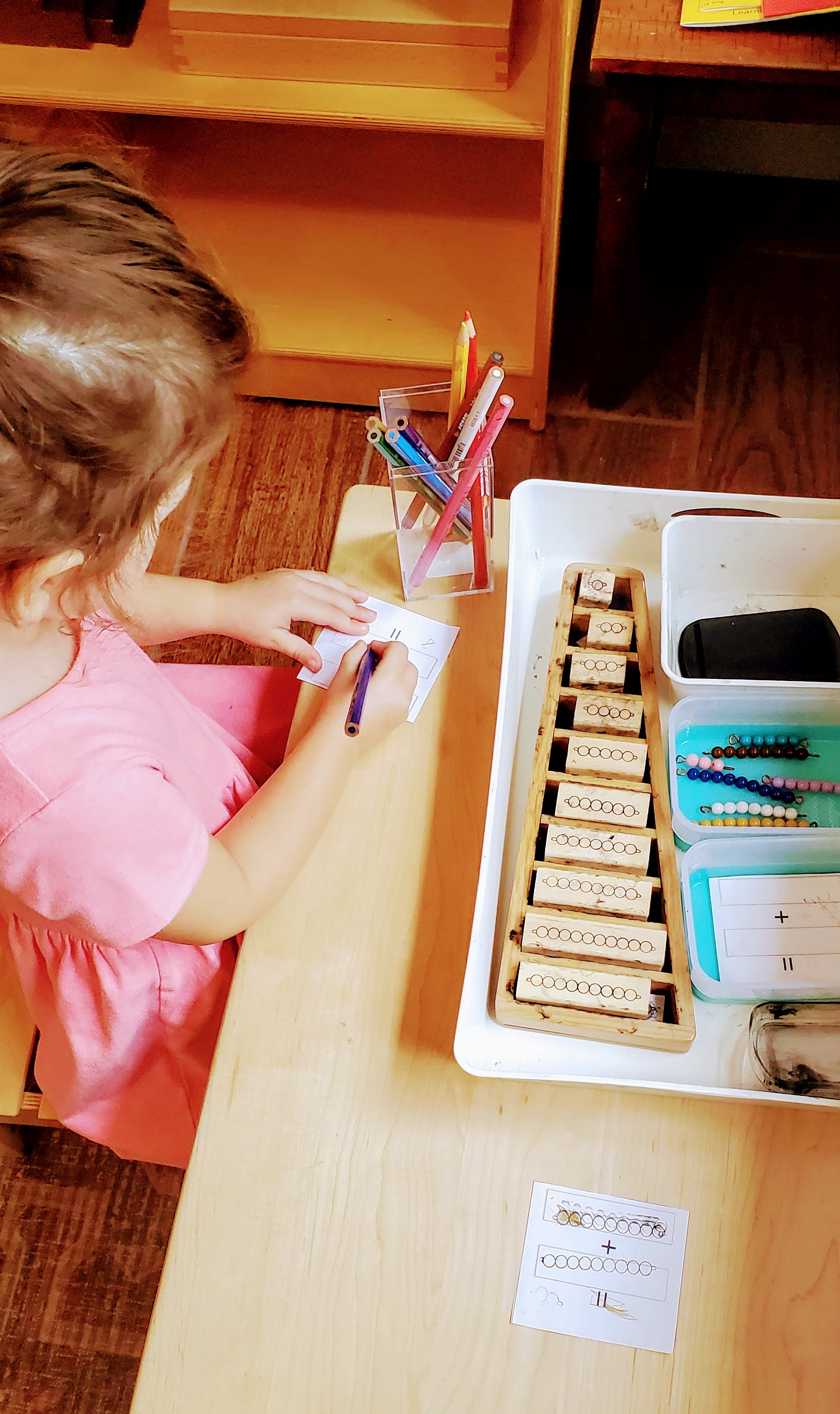Here are a few tips that can be integrated into your daily schedule. Always offer freedom of movement, this is how we learn. Show your child how to un/dress, offer two clothing choices, prepare meals together, model and encourage how to eat with utensils, drink from a small glass, sleep in a floor bed, and offer words for their feelings/behavior. Protect their concentration, don’t interrupt them, and allow them to complete their project. A little struggle is good, it allows for critical thinking and problem solving. Only intervene unless you observe the three ‘Ds” (Destructive, Disrespectful or Dangerous). Create a designated spot for their toys, don’t over stimulate them with too much. Periodically rotate their toys. Collaborate putting things away, help each other, and eventually your child will clean up independently (as best they can for their age). Routine, consistency, and modeling appropriate behavior and words enables young children to feel successful in social situations and a sense of orientation in different environments. Toilet learning is also very important. In the beginning, it’s not about a child producing but becoming used to this new way of life. Toileting is done in the bathroom and is no longer passive- your child helps because it is their work (not yours). Diapers are changed standing and your child sits on the potty while you grab a clean diaper or underwear. For more information on toilet learning, please find toilet learning blog.
Three Areas to Consider:
- Sleeping– floor bed, quiet, low light, peaceful
- Personal Care– In the beginning a changing table with everything you need is in arms reach. When your child is walking steady, personal care moves to the bathroom or an area of the home where the family spends most of their time. Establish a routine and consistency using a small potty, a receptacle for soiled clothes, clean clothes, a stool, sink, and soap. Now there a collection of items available in your child’s reach as well as your reach. Toileting is about establishing a consistent routine that works for your child and family’s schedule. This is not about the child producing, in the beginning it is about your child becoming used to this new way of personal care.
- Movement– gross motor (climbing, pushing, pulling, lifting, throwing, etc.) and fine motor activities (open/close, puzzles, clay, food prep, etc.) on low shelves, a toddler table and chair.
- Meals– In the beginning, this is in a parent’s arms. When your child is sitting up (5 months) place your child in a weaning chair and table, here they begin a new a relationship with you by sitting across from you, your child begins to test new foods, and practice their eye-hand coordination with a spoon. When your child is walking steady, some meals might be at their toddler table and chair and other meals might be in a chair that enables your child to sit at the kitchen or dining room table. It’s important not to lock your child down with straps. Teach them how to independently sit, eat, and enjoy each other’s company.



















